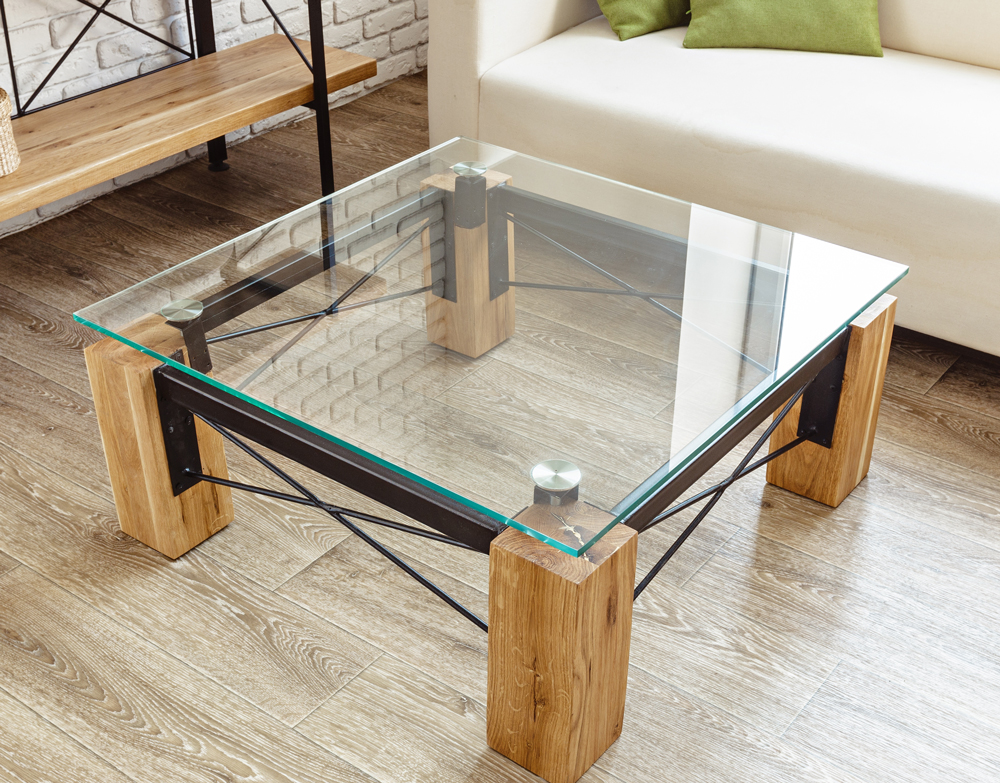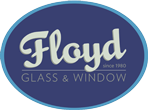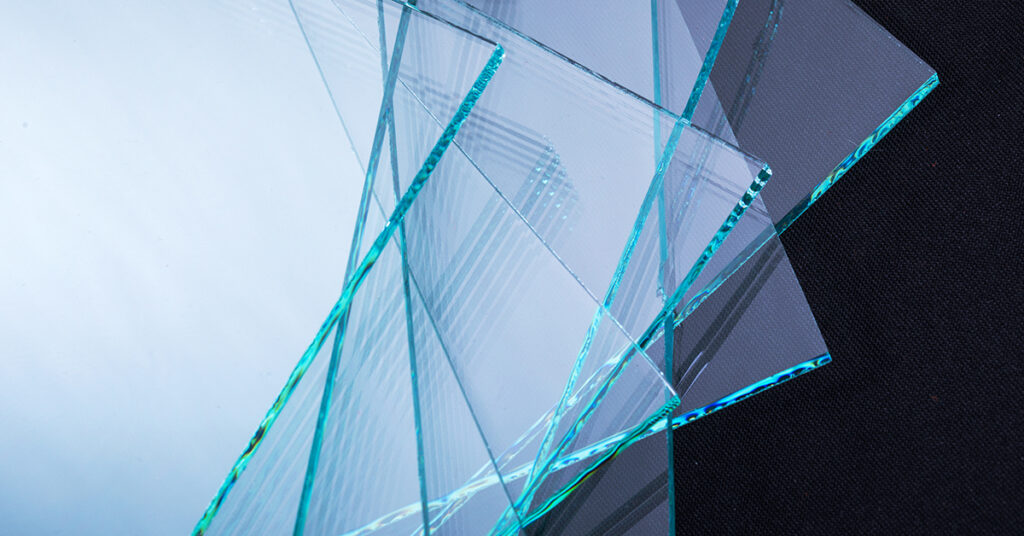At Floyd, we specialize in making custom table top glass. Whether for your home or business, we can meet your needs.
Are you looking to protect your furniture while adding beauty with a custom table top glass? Or are you hoping for a unique piece specially made to add interest to a room? When we fill our customers’ specific custom glass needs, we don’t stop at table top glass; we also do custom glass shelves. In addition, we also offer custom decorative cabinet glass.
Our experience in making custom tabletop glass is vast. Tabletop glass adds a touch of elegance to your tabletop. At Floyd, we can make your vision become a reality. We offer bronze glass, which brings out the best in your darker wood table, clear glass, grey, and black glass, which looks fantastic around an entertainment system. All our glass options can be custom cut to match your table. See the image below for a visual of these glass color options.
Once you know you want custom tabletop glass, the following questions are: How thick? What type of edges do I want? And, Do I want tempered or annealed glass? Follow the links below to learn more about these specifications. Contact us and talk to one of our specialists to develop a custom plan for your needs!

Custom Glass Edges
There are a lot of options for your custom glass edges. Let’s start with a few definitions:
Seamed
A Seamed edge has been sanded, and it may be rough and slightly chipped, but it will not be sharp. It is the most economical edge, but it’s not recommended if the edges will be exposed. All of the glass leaving Floyd will at least be seamed.
Satin Polish
Satin Polish is the most common polish that leaves Floyd. It is sanded to a smooth Satin or Frosted finish. It is commonly used for table top glass and mirrors with exposed edges.
Pencil Polish
Pencil Polish is the most common upgrade for a polished edge. It adds a level of elegance to your table top glass. Pencil Polish looks great on Shelves and Higher Table Tops. The pencil polish is a rounded edge that blends into the edges of the furniture.
Flat Polish
As the name implies, a flat polish is a flat edge with a slight 45-degree chamfer on the top and bottom. Flat polish is recommended for custom-made 1/2″ and thicker Glass Table Tops. It is economical and is the best way to show the thickness of the glass. A Flat Polish is also called a “Machine Polish.” You will see this most commonly on pieces made in bulk.
Other Options
- Flat
- Pencil
- Ogee
- Waterfall
- Bull Nose
- Mitre
- Bevel
What Glass Thickness Do I Need?
That depends on the table. If the glass piece is used as a table or protective cover, then 1/4″ thickness is sufficient. If the glass piece is being set upon a stand or a pedestal to form the actual table surface, however, depending on the size, you may choose to use a thicker glass.
In these cases, if the glass table to be used is larger than 24″ in dimension or is to support heavy objects, using any range of thickness larger than 1/4″ is recommended.
When it comes to choosing a thickness between 3/8″, 1/2″, 1/4″, 1/8″, or 3/32″, it is mostly a matter of preference. Thicker glass has a more substantial look and feel, but the weight of the glass top becomes a significant consideration after a certain size. Thicker glass can become very heavy as the size increases.
Here are our standard thicknesses:
3/32″ – Single Strength Glass. Used for picture frames and is not temperable.
1/8″ – Double Strength Glass. Used in storm windows/doors, larger picture frames, and Cabinet Glass
1/4″ – This is a suitable thickness for glass tabletops and glass protective table covers.
3/8″ – This is a suitable thickness for heavy, unsupported table tops where the glass is the only table top. They are also used for Frameless Shower Doors.
1/2″ – This is the strongest, most attractive thickness available, ideal for heavy, unsupported table tops where the glass is the only table top.
Tempered Vs. Annealed Glass
Whether you’re looking at fire-rated glazed doors, need new windows for your home, or are renovating your bathroom, you must ask many questions to ensure the glass product you buy is durable and fit for the job. There are pros and cons to each, and each customer is different based on the use of the glass.
Applications
This is one of the most common questions we get at Floyd Glass & Window.
There are many applications for tempered glass. It is used commercially in glass doors that have no frames. The windows in the passenger sides of cars use tempered glass to increase safety.
Annealed glass can be used in many situations. If a window is in a low-traffic area where safety is not concerned, the annealed glass may be the best option because it remains cheaper than tempered glass. But many states have adopted building codes where tempered glass is required. For instance, any glass window within two feet of an open door must be tempered.
Annealed Glass
When annealing, glass is slowly cooled to relieve any internal stresses. When not annealed, glass is more likely to crack when exposed to temperature changes. Unlike tempered glass, the traditional annealed glass will break off into large, sharp shards when broken. This can pose obvious safety risks. Care should be taken when choosing locations to install annealed glass. Annealed glass is an excellent fit for table top glass, cabinet doors, and basement windows.
Tempered Glass
Tempered glass is also called toughened glass. Unlike annealed glass, the tempered glass breaks into small, square pieces when broken. This makes it less likely to lacerate someone who comes into contact with it. Tempered glass is one of the hardest types of glass, several times harder than most others, including annealed glass. Creating tempered glass involves using chemicals and heat to give it its properties. These treatments balance the internal stress rating of the glass.
The downfall of Tempered Glass (as you will see in the video below) are the edges of the glass. Because of the heating and cooling process that the glass goes through to become tempered, the edges are the weak point. Meaning, that if metal comes in contact with the glass, it will likely blow: no one will get hurt, but you will now be in the market for a new piece of glass. Tempered Glass also can not be cut. Once it starts getting cut, it will explode into a thousand pieces.
Frameless Shower Doors, Windows within 18″ from the ground, Windows above a bathtub/shower, and glass within a certain distance of a doorway must be tempered by State Law. Because of the edges, Floyd Glass & Window recommends Annealed glass for most table tops.
Cost
Tempered glass is more expensive than annealed glass because it has to go through more processes in its creation.
Interested In A Custom Glass Table Top?
Contact our experienced team at Floyd Glass for a free quote!


